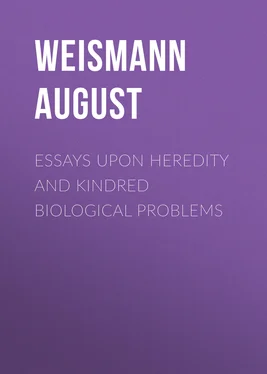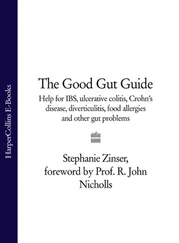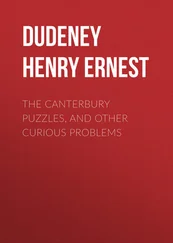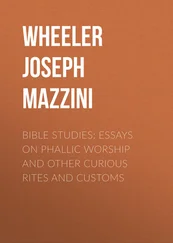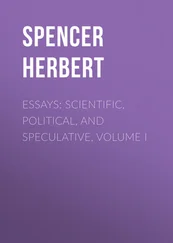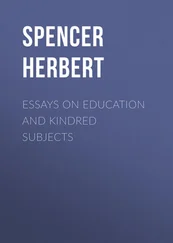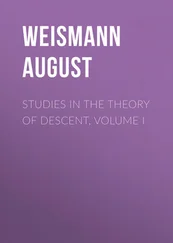August Weismann - Essays Upon Heredity and Kindred Biological Problems
Здесь есть возможность читать онлайн «August Weismann - Essays Upon Heredity and Kindred Biological Problems» — ознакомительный отрывок электронной книги совершенно бесплатно, а после прочтения отрывка купить полную версию. В некоторых случаях можно слушать аудио, скачать через торрент в формате fb2 и присутствует краткое содержание. Жанр: foreign_antique, Биология, на английском языке. Описание произведения, (предисловие) а так же отзывы посетителей доступны на портале библиотеки ЛибКат.
- Название:Essays Upon Heredity and Kindred Biological Problems
- Автор:
- Жанр:
- Год:неизвестен
- ISBN:нет данных
- Рейтинг книги:5 / 5. Голосов: 1
-
Избранное:Добавить в избранное
- Отзывы:
-
Ваша оценка:
- 100
- 1
- 2
- 3
- 4
- 5
Essays Upon Heredity and Kindred Biological Problems: краткое содержание, описание и аннотация
Предлагаем к чтению аннотацию, описание, краткое содержание или предисловие (зависит от того, что написал сам автор книги «Essays Upon Heredity and Kindred Biological Problems»). Если вы не нашли необходимую информацию о книге — напишите в комментариях, мы постараемся отыскать её.
Essays Upon Heredity and Kindred Biological Problems — читать онлайн ознакомительный отрывок
Ниже представлен текст книги, разбитый по страницам. Система сохранения места последней прочитанной страницы, позволяет с удобством читать онлайн бесплатно книгу «Essays Upon Heredity and Kindred Biological Problems», без необходимости каждый раз заново искать на чём Вы остановились. Поставьте закладку, и сможете в любой момент перейти на страницу, на которой закончили чтение.
Интервал:
Закладка:
It is easy to see that an individual is, ceteris paribus , more exposed to accidental death when the natural term of its life becomes longer; and therefore the longer the time required by an individual for the production of a sufficient number of descendants to ensure the existence of the species, the greater will be the number of individuals which perish accidentally before they have fulfilled this important duty. Hence it follows, first, that the number of descendants produced by any individual must be greater as the duration of its reproductive period becomes longer; and, secondly, the surprising result that nature does not tend to secure the longest possible life to the adult individual, but, on the contrary, tends to shorten the period of reproductive activity as far as possible, and with this the duration of life; but these conclusions only refer to the animal and not to the vegetable world.
All this sounds very paradoxical, but the facts show that it is true. At first sight numerous instances of remarkably long life seem to refute the argument, but the contradictions are only apparent and disappear on closer investigation.
Birds as a rule live to a surprisingly great age. Even the smallest of our native singing birds lives for ten years, while the nightingale and blackbird live from twelve to eighteen years. A pair of eider ducks were observed to make their nest in the same place for twenty years, and it is believed that these birds sometimes reach the age of nearly one hundred years. A cuckoo, which was recognised by a peculiar note in its call, was heard in the same forest for thirty-two consecutive years. Birds of prey, and birds which live in marshy districts, become much older, for they outlive more than one generation of men.
Schinz mentions a bearded vulture which was seen sitting on a rock upon a glacier near Grindelwald, and the oldest men in Grindelwald had, when boys, seen the same bird sitting on the same rock. A white-headed vulture in the Schönbrunn Zoological Gardens had been in captivity for 118 years, and many examples are known of eagles and falcons reaching an age of over 100 years. Finally, we must not forget Humboldt’s 1 1 Humboldt’s ‘Ausichten der Natur.’
Atur parrot from the Orinoco, concerning which the Indians said that it could not be understood because it spoke the language of an extinct tribe.
It is therefore necessary to ask how far we can show that such long lives are really the shortest which are possible under the circumstances.
Two factors must here be taken into consideration; first, that the young of birds are greatly exposed to destructive agencies; and, secondly, that the structure of a bird is adapted for flight and therefore excludes the possibility of any great degree of fertility.
Many birds, like the stormy petrel, the diver, guillemot, and other sea-birds, lay only a single egg, and breed (as is usually the case with birds) only once a year. Others, such as birds of prey, pigeons, and humming-birds, lay two eggs, and it is only those which fly badly, such as jungle fowls and pheasants, which produce a number of eggs (about twenty), and the young of these very species are especially exposed to those dangers which more or less affect the offspring of all birds. Even the eggs of our most powerful native bird of prey, the golden eagle, which all animals fear, and of which the eyrie, perched on a rocky height, is beyond the reach of any enemies, are very frequently destroyed by late frosts or snow in spring, and, at the end of the year in winter, the young birds encounter the fiercest of foes, viz. hunger. In the majority of birds, the egg, as soon as it is laid, becomes exposed to the attacks of enemies; martens and weasels, cats and owls, buzzards and crows are all on the look out for it. At a later period the same enemies destroy numbers of the helpless young, and in winter many succumb in the struggle against cold and hunger, or to the numerous dangers which attend migration over land and sea, dangers which decimate the young birds.
It is impossible directly to ascertain the exact number which are thus destroyed; but we can arrive at an estimate by an indirect method. If we agree with Darwin and Wallace in believing that in most species a certain degree of constancy is maintained in the number of individuals of successive generations, and that therefore the number of individuals within the same area remains tolerably uniform for a certain period of time; it follows that, if we know the fertility and the average duration of life of a species, we can calculate the number of those which perish before reaching maturity. Unfortunately the average length of life is hardly known with certainty in the case of any species of bird. Let us however assume, for the sake of argument, that the individuals of a certain species live for ten years, and that they lay twenty eggs in each year; then of the 200 eggs which are laid during the ten years, which constitute the lifetime of an individual, 198 must be destroyed, and only two will reach maturity, if the number of individuals in the species is to remain constant. Or to take a concrete example; let us fix the duration of life in the golden eagle at 60 years, and its period of immaturity (of which the length is not exactly known) at ten years, and let us assume that it lays two eggs a year;—then a pair will produce 100 eggs in 50 years, and of these only two will develope into adult birds; and thus on an average a pair of eagles will only succeed in bringing a pair of young to maturity once in fifty years. And so far from being an exaggeration, this calculation rather under-estimates the proportion of mortality among the young; it is sufficient however to enforce the fact that the number of young destroyed must reach in birds a very high figure as compared with the number of those which survive [See Note 1].
If this argument holds, and at the same time the fertility from physical and other grounds cannot be increased, it follows that a relatively long life is the only means by which the maintenance of the species of birds can be secured. Hence a great length of life is proved to be an absolute necessity for birds.
I have already mentioned that these animals demonstrate most clearly that physiological considerations do not by any means suffice to explain the duration of life. Although all vital processes take place with greater rapidity and the temperature of the blood is higher in birds than in mammals, yet the former greatly surpass the latter in length of life. Only in the largest Mammalia,—the whales and the elephants—is the duration of life equal to or perhaps greater than that of the longest lived birds. If we compare the relative weights of these animals, the Mammalia are everywhere at a disadvantage. Even such large animals as the horse and bear only attain an age of fifty years at the outside; the lion lives about thirty-five years, the wild boar twenty-five, the sheep fifteen, the fox fourteen, the hare ten, the squirrel and the mouse six years [ See Note 2]; but the golden eagle, though it does not weigh more than from 9-12 pounds, and is thus intermediate as regards weight between the hare and the fox, attains nevertheless an age which is ten times as long. The explanation of this difference is to be found first in the much greater fertility of the smaller Mammalia, such as the rabbit or mouse, and secondly in the much lower mortality among the young of the larger Mammalia. The minimum duration of life necessary for the maintenance of the species is therefore much lower than it is among birds. Even here, however, we are not yet in possession of exact statistics indicating the number of young destroyed; but it is obvious that Mammalia possess over birds a great advantage in their intra-uterine development. In Mammalia the destruction of young only begins after birth, while in birds it begins during the development of the embryo. This distinction is in fact carried even further, for many mammals protect their young against enemies for a long time after birth.
Читать дальшеИнтервал:
Закладка:
Похожие книги на «Essays Upon Heredity and Kindred Biological Problems»
Представляем Вашему вниманию похожие книги на «Essays Upon Heredity and Kindred Biological Problems» списком для выбора. Мы отобрали схожую по названию и смыслу литературу в надежде предоставить читателям больше вариантов отыскать новые, интересные, ещё непрочитанные произведения.
Обсуждение, отзывы о книге «Essays Upon Heredity and Kindred Biological Problems» и просто собственные мнения читателей. Оставьте ваши комментарии, напишите, что Вы думаете о произведении, его смысле или главных героях. Укажите что конкретно понравилось, а что нет, и почему Вы так считаете.
